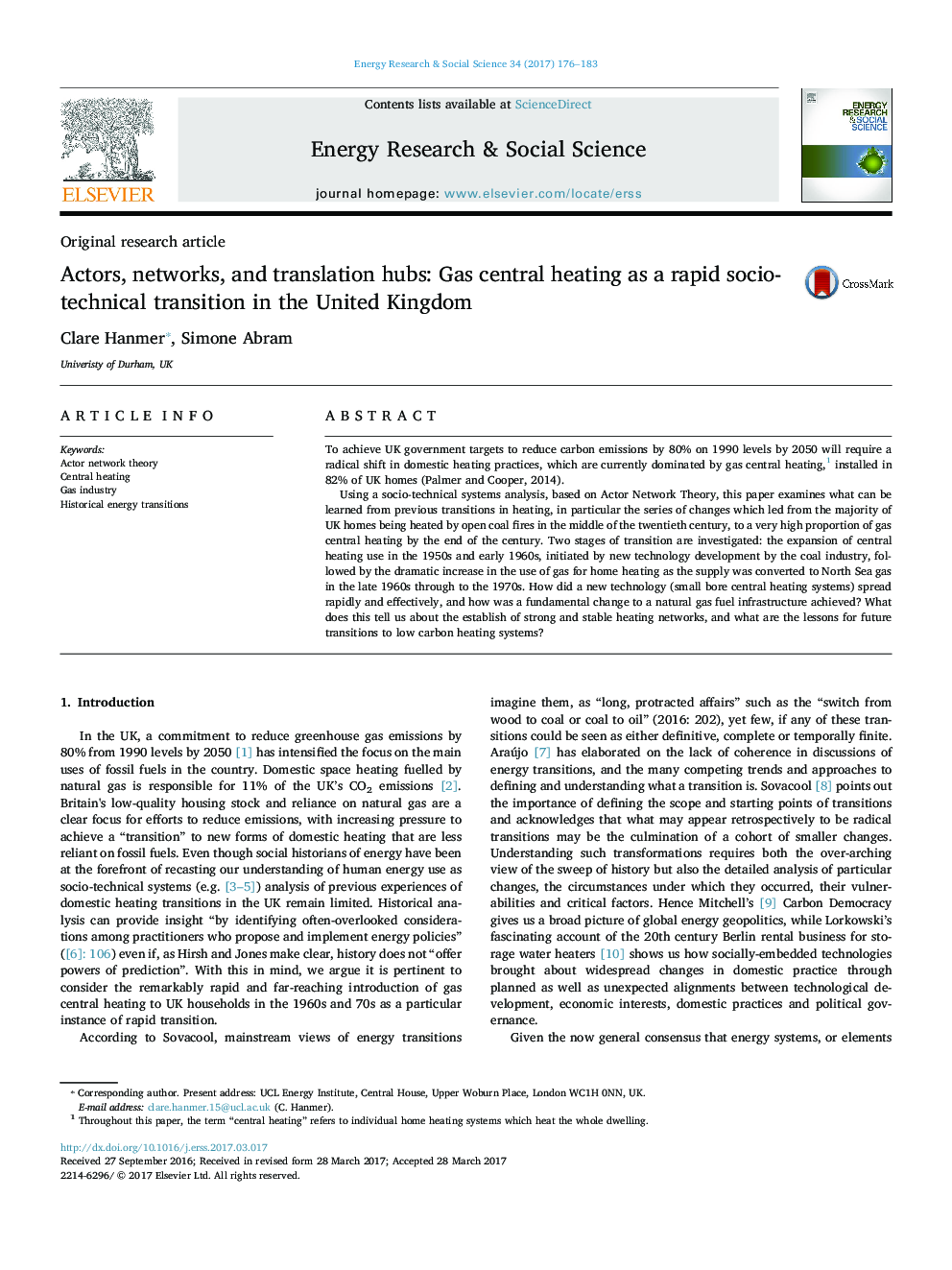| Article ID | Journal | Published Year | Pages | File Type |
|---|---|---|---|---|
| 6463787 | Energy Research & Social Science | 2017 | 8 Pages |
To achieve UK government targets to reduce carbon emissions by 80% on 1990 levels by 2050 will require a radical shift in domestic heating practices, which are currently dominated by gas central heating,1 installed in 82% of UK homes (Palmer and Cooper, 2014).Using a socio-technical systems analysis, based on Actor Network Theory, this paper examines what can be learned from previous transitions in heating, in particular the series of changes which led from the majority of UK homes being heated by open coal fires in the middle of the twentieth century, to a very high proportion of gas central heating by the end of the century. Two stages of transition are investigated: the expansion of central heating use in the 1950s and early 1960s, initiated by new technology development by the coal industry, followed by the dramatic increase in the use of gas for home heating as the supply was converted to North Sea gas in the late 1960s through to the 1970s. How did a new technology (small bore central heating systems) spread rapidly and effectively, and how was a fundamental change to a natural gas fuel infrastructure achieved? What does this tell us about the establish of strong and stable heating networks, and what are the lessons for future transitions to low carbon heating systems?
